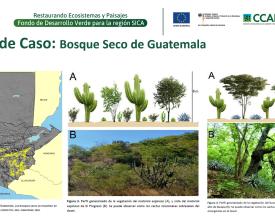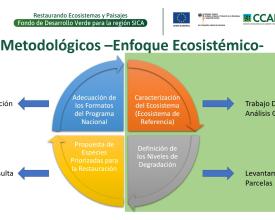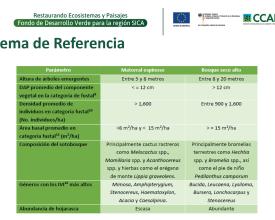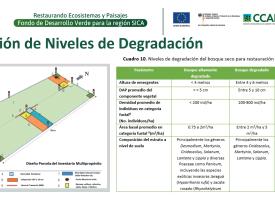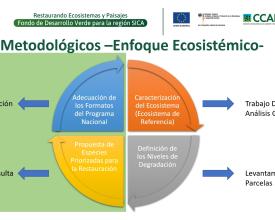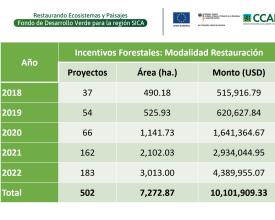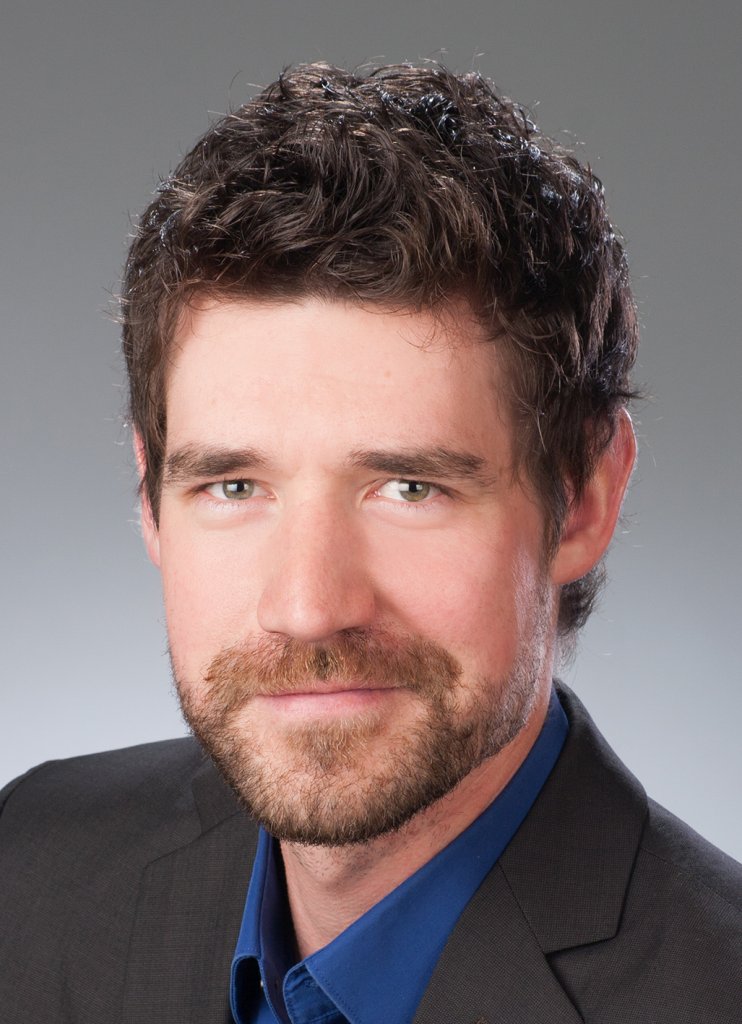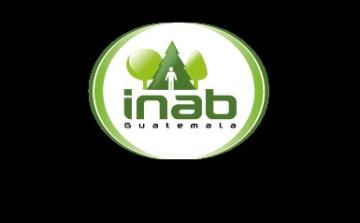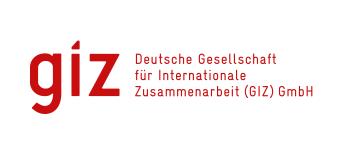
Forestry Incentives with an Ecosystem Approach

Guatemala committed to restore 1.2 million hectares in the Bonn Challenge. To achieve its commitment, it developed a national strategy for landscape restoration and identified the forestry incentive program as the main public policy instrument. In 2015, with the publication of the PROBOSQUE Law, it incorporated the modality of restoration and recovery of degraded lands.
With this solution, a scheme was proposed to increase the supply of environmental goods and services in strategic ecosystems, using techniques and species that provide the best ecological structure of the site to be restored and also increase public investment in landscape restoration.
The solution proposes the following method to incorporate the ecosystem approach in forestry incentives: 1) Characterization of the reference ecosystem, 2) Definition of degradation levels, and 3) Proposals of prioritized species for restoration.
Context
Challenges addressed
In 2019, Guatemala had 33% of its territory covered by forests (3,574,244 hectares); with an average annual loss of 97,223 ha. with a net loss rate of 0.5% between 2010-2016. This loss of forest causes the loss of the ecosystem goods and services they provide, affecting the communities and peoples that depend on these forests.
The PINFOR and PINPEP forestry incentives were focused on increasing forest cover with commercially valuable species; when the PROBOSQUE program was created and expanded with the modality of restoration and degraded lands, there were no guidelines and technical parameters to favor restoration in strategic ecosystems; this situation hindered the application and public investment in this modality.
Location
Process
Summary of the process
The solution integrates 2 Building Blocks: with the Characterization of the Reference Ecosystem and the Identification of Degradation Levels (B1), the technical restoration measures are established for each ecosystem, taking into account the structure of the current forestry incentive programs, eliminating generality and making them more compatible with the objectives of ecological restoration.
While Incorporating Ecosystem Parameters to Forest Incentive Programs (B") aims to amplify the benefits of B1 to different ecosystems at different levels, through modification and/or adaptation of national programs, achieving an increase in public investment in ecosystems with high levels of degradation.
Building Blocks
Characterization of the Reference Ecosystem and Definition of Degradation Levels
The objective of this building block is to provide technical teams with the biological parameters necessary to determine the current state of an ecosystem (level of degradation) and the desired state (healthy), in order to determine the appropriate restoration measures to be implemented in that specific ecosystem; for example, we will use the case of the Guatemalan dry forest.
The characterization of the ecosystem is done by documentary review and geospatial analysis, identifying the general-initial conditions of the ecosystem and its associations. Distribution / Climate / Soil Quality / Topographic Elevation / Flora Diversity / Fauna Diversity / Dasometric Characteristics of the Reference Ecosystems. For the dry forest, 3 associations were identified: 1) thorny scrub, 2) high dry forest and 3) riparian forest.
The definition of the levels of degradation is done by plot survey, comparing the successional states of the reference ecosystem with the dasometric characteristics obtained from the plots. In the case of the dry forest, three levels of degradation were identified: 1) pioneer succession, 2) secondary forest and 3) degraded forest.
Enabling factors
- The existence of a policy framework that defines work in strategic forest ecosystems as a priority.
- The existence of policy instruments (conservation strategies, general forest management guidelines, etc.) oriented to strategic forest ecosystems.
- Groups interested in promoting or updating public policy instruments in strategic forest ecosystems where they implement actions.
Lesson learned
- The quality of the characterization of the reference ecosystems and their levels of degradation will depend on the quantity and quality of documentary and geospatial information available; the generation of this information and the survey of plots in the field may require a lot of resources and time.
Incorporate Ecosystem Parameters into Forestry Incentive Programs.
The purpose of this building block is to develop forest management policies for each strategic forest ecosystem and link them to the objectives of forest incentive programs and/or payments for environmental services in the country.
In essence, it is required to promote incentive policies (economic and/or commercial) and technical regulations that stimulate conservation, restoration and/or production in each strategic ecosystem.
This requires two main elements:
- The ability to adjust forestry programs to accommodate biological elements, which were not developed when the technical forest management instruments were created.
- Encourage cross-sectoral dialogue among stakeholders to identify technical and political common ground.
To illustrate this building block, the case of the Guatemalan Forestry Incentives Program -PROBOSQUE- is used; which made adjustments to forestry incentives in the forest restoration and degradation modality, changing technical parameters.
Enabling factors
- To have a clear forest policy framework that first determines the scope of its objective as a public policy, the subject that expects to benefit and the expected results of its implementation.
- To have consolidated public policy instruments that allow for interaction with other productive sectors. Guatemala's Forestry Incentives Program -PROBOSQUE- originated in 1996 and continues to operate to date.
Lesson learned
- The development of pilot initiatives is required to evaluate and/or test the technical hypotheses of the different stakeholders in adjusting public policy instruments.
- Extensive internal and external discussion and consultation processes are required among the different stakeholders to achieve the expected benefits, without affecting the institutional and legal mandates that stakeholders must comply with.
- Technical materials should be developed to communicate and disseminate information to potential stakeholders on the new modalities offered by public policy instruments.
Impacts
The ecological structures and environmental services of 4 vulnerable ecosystems (dry forest, broadleaf forest, mixed forest and mangrove) have been improved, contributing to the increase of biodiversity and the protection of endangered species.
Public investment in restoration and degraded lands has been increased through 502 projects with an amount of USD $10,101,909.33 from 2018 to 2022.
Beneficiaries
Owners and holders of land, as well as degraded forests, who benefit from the ecosystem services that these restored and biodiverse forests can provide.
Sustainable Development Goals
Story
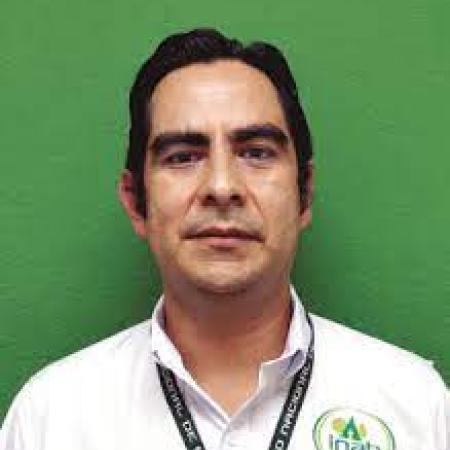
"However, with the approval of the PROBOSQUE law, the need was identified to expand to new restoration techniques and approaches, differentiating ecosystem types, which required new technical guidelines for their incorporation into the incentive program. The incorporation of the experience has allowed us to obtain new landscape arrangements with species in accordance with the ecosystem, the implementation of ancestral knowledge in local governance and, at the institutional level, empowerment at the technical level for the implementation of this new restoration approach". Rafael Avila, Head of INAB's Forest Restoration Department.

